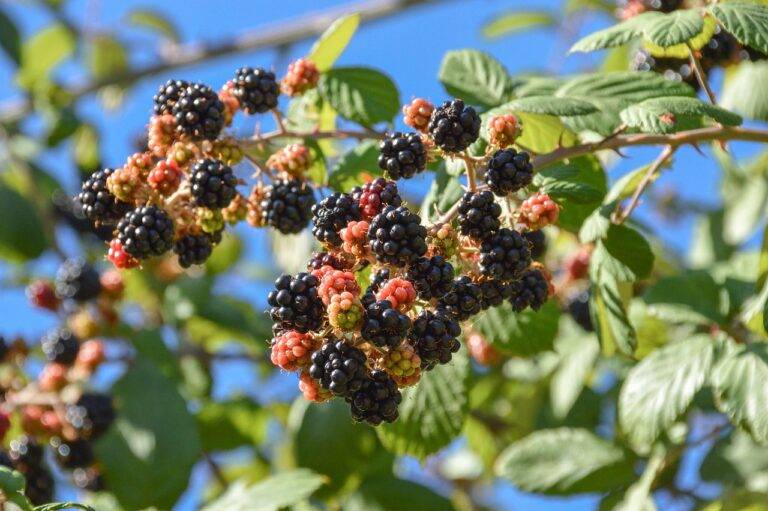The Future of Food: Innovations in Food Technology
Food sustainability is a crucial consideration in today’s world as we aim to address environmental challenges and ensure food security for future generations. Adopting sustainable practices in agriculture, such as promoting crop rotation and reducing food waste, can help minimize the negative impact on the environment while making the most of our resources. By supporting local farmers and choosing organic produce, individuals can contribute to a more sustainable food system and reduce their carbon footprint.
Furthermore, raising awareness about the importance of sustainable food choices is key to fostering a culture of sustainability. Educating consumers about the benefits of eating seasonal, locally sourced foods and reducing meat consumption can lead to more mindful food consumption habits. Making informed decisions about what we eat not only benefits our personal health but also plays a role in shaping a more sustainable food system for the future.
Vertical Farming
Vertical farming is a cutting-edge agricultural method that involves growing crops in vertically stacked layers, usually in controlled environments such as warehouses or skyscrapers. This innovative technique maximizes the use of space and resources, allowing for year-round production of fresh fruits, vegetables, and herbs without being constrained by traditional land limitations. By utilizing hydroponic or aeroponic systems, vertical farms can significantly reduce water usage and minimize the use of chemical pesticides, making them more environmentally sustainable than conventional farming methods.
One of the key benefits of vertical farming is its ability to increase food security by bringing production closer to urban areas, reducing transportation costs and emissions associated with long-distance food distribution. In addition, vertical farms can also help mitigate the impacts of climate change on agriculture by providing a more resilient and adaptable food production system. With advancements in technology and the growing demand for locally sourced, organic produce, vertical farming is poised to play a crucial role in the future of sustainable agriculture.
• Vertical farming involves growing crops in vertically stacked layers
• Controlled environments such as warehouses or skyscrapers are used
• Maximizes space and resources for year-round production of fresh produce
• Utilizes hydroponic or aeroponic systems to reduce water usage and chemical pesticides
Vertical farming offers numerous benefits, including increased food security by bringing production closer to urban areas. This reduces transportation costs and emissions associated with long-distance food distribution. Additionally, vertical farms can help mitigate the impacts of climate change on agriculture by providing a more resilient and adaptable food production system. With technology advancements and the rising demand for locally sourced, organic produce, vertical farming is positioned to play a crucial role in sustainable agriculture moving forward.
Overall, vertical farming represents a promising solution to the challenges facing traditional agriculture today. Its innovative approach not only maximizes efficiency but also promotes environmental sustainability through reduced water usage and pesticide use. As we continue to explore ways to feed our growing population while minimizing our impact on the planet, vertical farming stands out as a key player in shaping the future of food production.
Lab-Grown Meat
Lab-grown meat, also known as cultured meat, is a cutting-edge innovation in the food industry. The process involves growing animal muscle tissue from a small sample of cells in a laboratory setting, without the need to raise and slaughter animals. This technology has the potential to revolutionize the way meat is produced, offering a more sustainable and ethical alternative to traditional livestock farming.
One of the key benefits of lab-grown meat is its significantly reduced environmental impact compared to conventional meat production. By eliminating the need for vast amounts of land, water, and feed required to raise livestock, lab-grown meat has the potential to address some of the key challenges associated with food sustainability. Additionally, this technology has the potential to address concerns related to animal welfare and the ethical implications of meat consumption.
What is lab-grown meat?
Lab-grown meat, also known as cultured meat or clean meat, is meat that is produced by in vitro cultivation of animal cells rather than from the traditional process of raising and slaughtering animals.
How is lab-grown meat produced?
Lab-grown meat is produced by taking a small sample of animal cells, such as muscle tissue, and then cultivating and multiplying these cells in a controlled environment to create edible meat.
Is lab-grown meat sustainable?
Yes, lab-grown meat is considered to be more sustainable than traditional meat production methods. It requires less land, water, and energy, and produces fewer greenhouse gas emissions.
What are the benefits of lab-grown meat?
Some benefits of lab-grown meat include reduced environmental impact, improved animal welfare, and potentially lower risks of foodborne illnesses.
Are there any challenges to producing lab-grown meat?
Some challenges to producing lab-grown meat include the high cost of production, scalability issues, and consumer acceptance and regulatory approval.
How does vertical farming play a role in lab-grown meat production?
Vertical farming can provide a controlled environment for growing the plant-based components of lab-grown meat, such as the nutrients and scaffolding materials needed to support cell growth.
Will lab-grown meat replace traditional meat in the future?
While it is unlikely that lab-grown meat will completely replace traditional meat in the near future, it may become a more prominent part of the global food supply as technology advances and production costs decrease.







